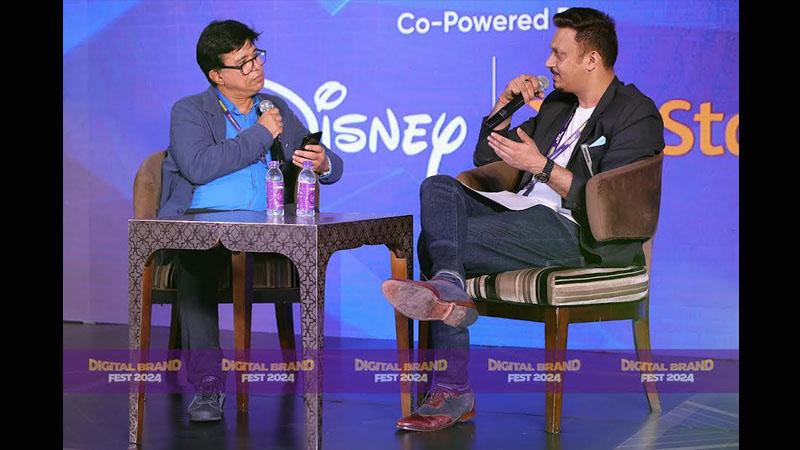Mumbai: The India Digital Brand Fest 2024, held on 30 August at Hotel Pride Plaza in Aerocity, New Delhi, was a pivotal event bringing together brand marketers, advertising and digital professionals, and CMOs under one roof. The festival illuminated critical trends in digital marketing, mobile strategies, and programmatic advertising, reflecting the rapid evolution of the industry.
Amidst a landscape that is increasingly shaped by technological advancements, Connected TV (CTV) emerged as a central theme of the event.
Diving into this, Indian Television dot com’s founder, chairman, and editor-in-chief Anil NM Wanwari, joined mediasmart’s chief growth officer, Nikhil Kumar, for a discussion centering around the transformational impact of CTV on the advertising ecosystem in India.
Hard sell to the essential tool:
Kumar shared his journey of championing CTV, a concept that was initially met with skepticism. “When we introduced CTV to the Indian advertisers during the COVID-19 pandemic, it was a tough sell. Few brands saw the potential,” Kumar recalled. However, as he passionately explained, the landscape has drastically changed. Today, CTV is not just relevant—it’s crucial for any brand in today’s modern advertising. He emphasised that CTV’s power lies in its ability to democratise advertising, allowing even small-town brands to share the spotlight with major players.
Empowering the underdogs:
One of Kumar’s most compelling anecdotes highlighted how CTV is levelling the playing field for advertisers from towns beyond metro cities. He recounted a moment when a small-scale pesticide company’s founder, located in tier two or tier three town, was overjoyed to see his ad appear on television via an OTT platform. This, Kumar explained, is the magic of CTV—it allows brands that never imagined themselves on the big screen to reach audiences they couldn’t have before.
Need for creative evolution:
Wanwari pointed out a key challenge: many advertisers are not fully leveraging the potential of CTV. He noted that viewers often see the same ad repeatedly, leading to viewer fatigue. Kumar agreed, stressing the importance of dynamic creative optimisation (DCO) in addressing this issue. By tailoring ads based on user behaviour and exposure, brands can avoid bombarding viewers with the same content, instead offering a more engaging and personalised experience.
Innovations driving CTV:
Kumar highlighted several innovations that are pushing the CTV space forward. He spoke about mediasmart’s introduction of Creative Sync, a tool that enhances traditional ads by making them more interactive and engaging. For instance, a Coca-Cola ad could feature a bottle filling up on-screen, creating a thirst-quenching effect that’s impossible to ignore. This level of creativity, combined with the strategic use of QR codes and other interactive elements, is transforming how advertisers connect with their audiences.
Unified advertising experience:
As the conversation drew to a close, Kumar discussed the importance of a unified advertising approach. He pointed out that today’s consumers interact with multiple screens throughout their day—from their mobile phones to CTVs to digital out-of-home screens in places like elevators. The key is not to bombard the user with the same ad on every screen but to create a seamless, multi-screen experience that builds brand recall without overwhelming the viewer.
Future of CTV:
Kumar is optimistic about the future of CTV in India, especially with major players like Jio entering the space. He sees CTV not just as an alternative to traditional TV but as a powerful tool that can complement and enhance other forms of digital advertising. With the right strategies, he believes CTV will continue to grow and evolve, offering brands new and exciting ways to engage with their audiences.
In conclusion, Nikhil Kumar’s insights paint a vivid picture of a rapidly evolving advertising landscape, where connected TV is no longer just a concept but a vital component of any forward-thinking brand’s strategy. As Kumar succinctly put it, “The future of advertising is not about where your ad is shown; it’s about who sees it and how they engage with it.”
 Follow Us
Follow Us





